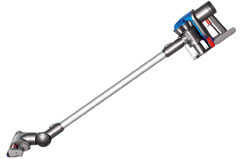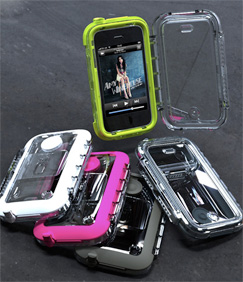I was astounded recently when reading an article on Dyson’s new Digital Slim. The company claims to have 225 patents pending relating to technology used in its cordless vacuum cleaners.
Piquing my curiosity, I took a look at Dyson’s website where I learnt that the DC15 The Ball, the first vacuum to ride on a ball instead of four wheels, has 182 patents and patent applications.
It’s clear that this is a company that takes its Intellectual Property (IP) very seriously. Further reading of its website revealed that Dyson has its own team of in-house IP and patent experts and spends “tens of thousands of pounds” each year on patent applications and renewals.
The fact that it does this should come as no real surprise considering how it was burnt in the past. In a famed case, Dyson sued Hoover UK for patent infringement after the latter launched the Vortex cleaner, which used a similar process to Dyson’s dual cyclone model.
In 1999, after a lengthy court battle, Hoover was found to have infringed Dyson’s patent and was ordered to pay millions in compensation.
Of course Dyson is a massive company and can afford to keep applying for patents and renewing existing ones but what about individual inventors and designers? How easy is it for them to go about protecting their IP?
Although there are dedicated organisations that can assist and offer support (such as the UK Intellectual Property Office, ACID, Own-It and Creative Barcode), to be honest it seems to be a bit of a minefield out there.
Not only is the patenting process full of legal jargon, the perceived cost and complexity of filing a patent is enough to put many people off. Not to mention that you will need to file additional patents in order to protect your idea in other countries and regions.
However there are other, less expensive methods of protecting your ideas. For instance, through registered designs, trademarks and copyright. Although this can be done by the individual it seems wise to consult a specialist such as a patent attorney who can evaluate the idea and determine the best form of protection.
I have noticed recently that some design consultancies are commercialising their own product ideas. Remember Snapswall, an invention by 4Products. Similarly, Russell Beard, design director of Square Banana, has created an innovative iPhone case – The Nut – that he has brought to market through setting up a separate company, Okoqu.
With the help of a patent attorney he filed for a patent, registered the design and trademarked the brand and product. “Ultimately we decided that regardless of how well informed we felt about accessing the documentation online, it could never replace the confidence we received from meeting and dealing with a specific patent attorney,” he explains.
Beard does admit that the costs involved in employing an attorney did tempt him to draw the patent documents up himself. However, he argues that he wouldn’t have been able to conduct an accurate search into whether the idea did already exist and whether it could be successfully protected.
“In our case, we were encouraged to find that no one had ‘protected’ what we were doing,” he says. “It was worthwhile putting a flag in the sand to keep others out, particularly in such a lucrative market.”
As well as developing their own ideas into commercial products, design consultancies are also regularly approached by inventors.
This is especially true in these austere times when people are having to rethink their options due to redundancy or lack of security. London-based Innovate Design not only helps inventors with the patenting process. It also develops a working prototype of their ideas.
“The IP minefield is not just getting an idea protected but more often the challenge is presenting it in the best light to industry (through CAD design boards or prototyping), getting it manufactured or licensed and taking it to market,” says Alastair Swanwick, managing director of Innovate Design.
According to the company, enforcing patents successfully is the weak link in the current UK IP system particularly for the small player. In most cases, smaller companies and inventors can do very little to bigger companies that challenge their designs. Often they just get buried in patent litigation.
Also, you need to be aware of those nasty little ‘patent trolls’ or ‘non-practising-entities’, which own or buy up patents just to sue others for infringement.
The lack of UK government protection and enforcement of design rights seems such a shame when you consider how much the creative industries contribute to our country’s GDP.
But the good news is the current IP system is being looked at. In November 2010 the Prime Minister announced an independent review of how the IP framework supports growth and innovation.
One thing Innovate Design would like to see emerge from this review is a look at enforcement costs for the small inventor and increased official fees for the bigger patent filers, perhaps to support insurance for granted patents. Although a previous review has recommended the winning party’s legal costs are capped at £50,000 it is still a risk for an uninsured patent owner.
Protecting your IP can be a long and expensive process but you may not necessarily need to bring the patent lawyers in. As a designer it’s your responsibility to know the rights that protect you and understand enough about IP to be able to put an IP strategy together.
All in all, it is time to be more IP savvy.
Intellectual Property 101
Patent: Protects a new invention by giving the owner the right to prevent others from producing, importing or selling the invention, without their permission.
Registered Design: Protects the external form of the product and stops anyone producing a replica.
Copyright: Exclusive rights, owned by the inventor, to reproduce copies and control any original work.
Trademark: A type of intellectual property, normally comprising a name, symbol or logo.
Skipping between the legal jargon, Tanya Weaver helps you navigate the patenting maze








